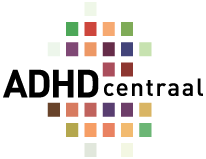eHealth
eHealth attention
Tips for better ATTENTION
You are on the waiting list for diagnostics for and possibly treatment for ADHD. Leading up to your survey, we would like to give you some tips for improving attention.
When you come to us for treatment, a psychologist can help you put the tips below and others into practice and stick with them.
Tip 1: Attention span
1. Measuring your attention span.
- Choose an unpleasant task and time to work on it.
- Grab a stopwatch (e.g., on your phone) and start the task.
- When you feel a strong urge to stop working (i.e., not immediately at the first distraction), turn off the stopwatch and write down how long you were working.
- Repeat 3-4 times.
- Calculate how long on average it took you to become distracted and take this as your attention span.
2. Concentrate according to attention span.
- Divide the task into pieces that take about as long as your attention span.
- Set a timer that signals when your attention span has expired. There are handy apps for this, such as “Pomodoro,” where you can set how long you want to pause and after how many times you want a longer break.
3. Pause.
- For example, 5 or 10 minutes and once in a while 30 min, e.g. lunchtime.
- Keep breaks stimulus-free to allow your brain to recover from the exertion.
So no reading and answering emails or messages on the phone or computer, but just eating, drinking, getting up from your seat, walking.
4. Postpone distractions
When you are working on an unpleasant task, it is normal for distractions to come to mind that tempt you to stop working. What you can do:
- Put a notebook next to you.
- Set your alarm clock with your attention span time and/or choose a piece of task that takes as long as your attention span.
- Begin the task.
- As soon as a distracting suspicion comes to you such as something you want to do, write it down in your notebook without doing anything further with it.
- Say to yourself something like, “I’m not going to think about that now, but during my break.
- Continue your task until you finish or the alarm clock rings.
- During your break, decide what to do with what you have written down:
- What needs to be done now, you do now.
- What you need to do later, write on a to-do list / 2 do list.
- What is not so important, cross out.
NOTE: Practice makes perfect; the more often you do this, the easier it becomes. It is normal for this to be difficult; keep practicing!
Tip 2: Adapt environment
Your work environment and associated stimuli affect your concentration. It may make sense to reduce stimuli, but some people actually benefit from more stimuli.
1. Choose a good workplace.
- Working at home can be very distracting, e.g., by constantly seeing what still needs to be done in the household. Then choose a separate room or place (e.g., facing the wall) in which you have few distractions.
- A work environment where you see others working can help you get and stay employed yourself. E.g. at work, study, in the library.
- Some, on the contrary, enjoy being in an incentive
rich
environment, such as a café. Music, for example, can be helpful in not straying into one’s own thoughts.
2. Reduce distracting stimuli.
Ask yourself what often distracts you. For example:
- Your phone.
- Emails, messages, Whatsapp.
- Internet, websites.
- Social media (Facebook, Instragram)
- Games.
- Stuff on your desk or table.
- Radio, TV, music.
- Other people.
- Looking through the window at what is happening outside.
For each distraction, devise a strategy to be less bothered. For example:
- Put phone on silent, turn off internet, on airplane mode or completely off.
- Disable notifications/notifications/sound that you receive a new message.
- Cleaning up your desk or workspace.
- Turning off the radio or TV.
- Others ask not to come in when you are at work.
- Don’t put your desk by the window.
You can download and print a schedule below to use:
